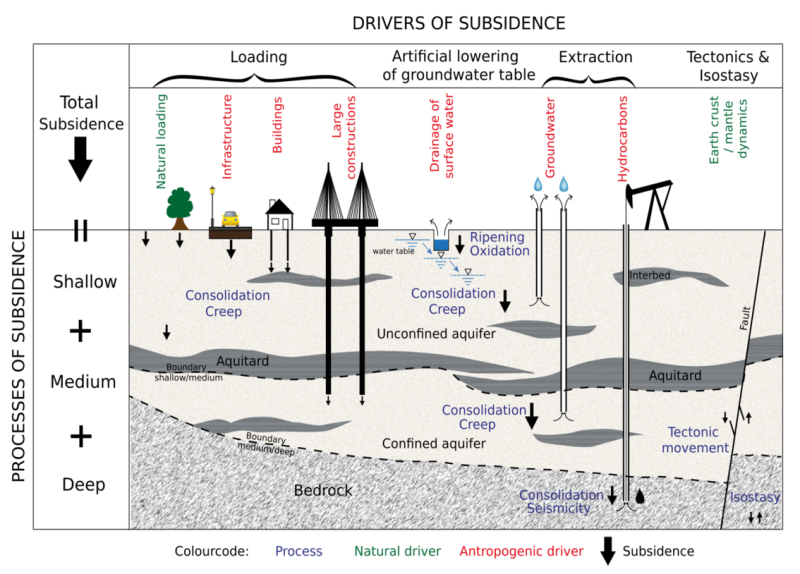Land subsidence
What is subsidence?
Land subsidence, or soil subsidence, is the sudden sinking or gradual downward settling of the ground’s surface with little or no horizontal motion. In the Netherlands, soil subsidence happens at scale in areas with a subsurface consisting of ‘soft’ peat and/or clay that have an artificially lowered water table, to make the land suitable for agriculture or building. Draining the water causes the peat and clay to settle and compact. Additionally, organic matter lying above the water table will oxidize and eventually disappear. Soil subsidence also happens due to extraction of natural gas or mining activities. Subsidence is a widespread international problem, also happening, for example, in Jakarta, Indonesia (see video on YouTube).
Measuring, Monitoring, and Modelling
LOSS brings together data and modelling tools to allow disentanglement of the cumulative causes behind progressing land surface subsidence in soft soil polder land, to enable forecasting. This work is carried out in work packages 1, 2 and 3.
Measures, mitigation strategies, CBAs, assessment frameworks
LOSS researches, explores and tests new ways of dealing with land subsidence and troubled relations between parties that result from its costs, from the perspective of civilians, businesses, government, permissions, spatial planning, law. This happens by making use of case studies and by performing societal cost-benefit analysis (CBAs, to stimulate communities to weigh their various options and pick suitable sets of measures, whether technical, re-organisational or other, mitigative or adaptative measures. This work is carried out in work packages 3, 4 and 5.
Working together
Land subsidence is a complex problem, and researchers, industries, government and society should and must contribute to solving this challenge. We work with a broad group of partners within LOSS, and beyond that we share work with other efforts in the field of land subsidence.


